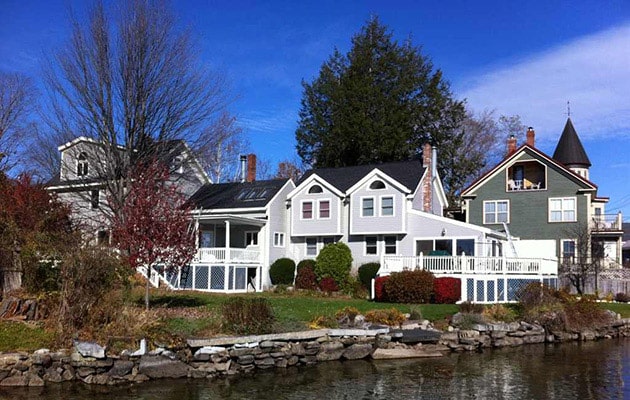It’s time to replace your commercial roof. You’ve saved up over time and already have financing in place. Understanding the factors that affect the cost of a commercial roof replacement can help you know how much to budget.
1. Type of Roof
Commercial roofs come in many forms, each built according to the building’s needs. Given the larger size of commercial buildings, their roofs tend to be ‘flat,’ even though they are always slightly sloped to aid water runoff. There’s a wide range of commercial roofing materials to choose from; your options will be based on:
- The size of your building
- Climatic conditions, e.g., extreme cold, intense heat, too much rain
- Underlying roof structure composition
- Structures you place on the rooftop
- The need to withstand high foot traffic
- Durability, energy savings, and cost
The type of roof your commercial building has plays a crucial role in the longevity of the roof and overall property health. It will also determine the material you choose and affect the overall cost of installation.
2. Roofing Material
The type of material you choose for your commercial roof replacement will affect the cost of the project. Some of the most common commercial roofing materials include:
- EPDM has the lowest cost per square foot and can help lower your energy costs if applied in white. It has a 20-year lifespan and tends to be relatively fragile towards the end of its life.
- TPO reflects heat better than EPDM and has better resistance to hail and chemical exposure. TPO has a shorter lifespan than EPDM.
- PVC is strong, durable, and recyclable, but it requires the complete removal of the old roof before installing the new one.
- Built-up roofing (BUR) and modified bitumen roofs last 50 years or more, but they require labor-intensive installation to ensure the materials hold up over time.
- Metal roofs are incredibly durable, with an expected lifespan of 60 years or more, but they cost more upfront than other roofing materials.
It’s a good idea to know your options and understand the pros and cons of each material to be confident you’ve chosen the right one for your commercial roof. Take into consideration the initial cost, performance, lifespan, and maintenance costs for the roof.
3. What’s Underneath
Under the top commercial roofing material is a combination of single and multiple components that make up the roofing system. These components include:
- Insulation
- Roof structure (wood, metal, or concrete decking)
- Cover board
- Underlayment
- Ventilation
- Other essential substrate materials
The condition of these components will affect the cost of your replacement. If there’s a noticeable amount of damage, the materials will need to be repaired or replaced, increasing the overall cost.
Your roofing contractor will thoroughly inspect your roof. They will know when repairs are needed or if it’s time for a replacement. In most cases, infrared technology is used to detect and measure the amount of moisture in your roofing system.
4. Roof Accessibility
Another factor that impacts the cost of commercial roof replacement is the ability to access your roof. Accessibility factors include:
- Property access
- The height of the building
- Occupancy
- Material storage areas
If there’s a tighter fit between buildings or the building is surrounded by trees, it will take more equipment and time to get the job done. The taller the building, the more manpower, and equipment are needed to get materials to and from the roof. If the project will interfere with normal business, adjusting work hours may entail additional charges.
5. Wind Loads and Fasteners
Weather and building codes will determine the type of fasteners and wind load your commercial replacement roof must be able to handle. Depending on the geographical location of your building, the roof must resist a certain amount of uplift pressure.
In some areas, for example, a building may be required to have stronger fasteners to withstand winds of up to 150 mph and resist uplift pressure of about 900 pounds per square foot. Compliance with fasteners and wind load requirements isn’t optional.
6. Code Requirements
Other than fasteners and wind load requirements, other local, regional, and state building codes will affect your bill. Building codes vary based on the jurisdiction, but they require roofing contractors to build roofs to specific standards.
Also, building codes often change over time due to a constant push to make roofing systems resistant to cold, fire, wind, and interactions with wildlife.
If your commercial roof was installed at a time when codes were less strict, your new roof will have more code requirements to follow. It’s essential to hire a local commercial roofing contractor who understands the building code and will meet the regulations.
The roofing experts at Adam Vaillancourt Roofing can meet all your commercial roofing needs in the Southern New Hampshire and Northern Massachusetts areas. We’ll help you choose the best roofing materials for your property. We provide a written estimate detailing what work will be performed, the materials we’ll use, and how much it will cost. Our team is proud to offer excellent workmanship, customer service, and the ability to work with budgets. Contact us today to schedule your commercial roof evaluation.




